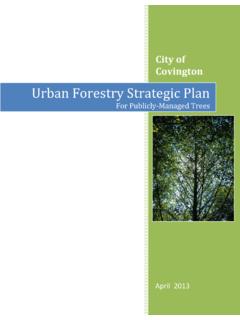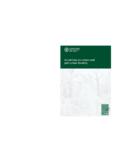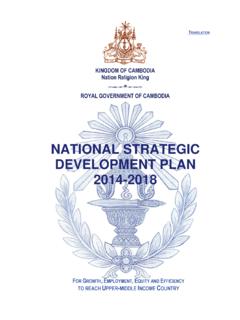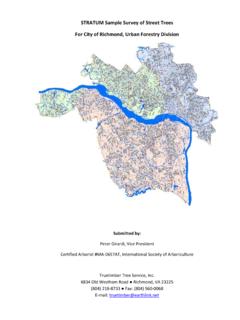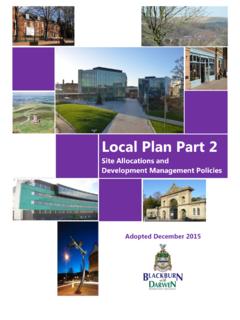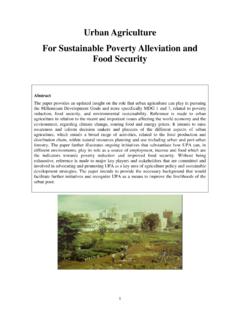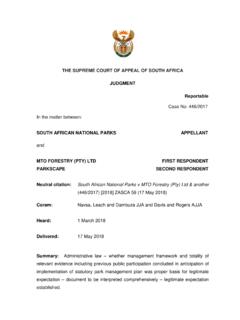Transcription of 0./1/%'&%)2)3&'&45'&%) - fire.ca.gov
1 Community Wildfire Prevention & Mitigation In response to Executive Order N-05-19. Report Prepared by: California Department of Forestry and Fire Protection With Assistance From: Governor's Office of Emergency Services California National Guard California Government Operations Agency Governor's Office of Planning and Research Department of Finance California Natural Resources Agency February 22, 2019. Contributors CAL FIRE would like to thank the following agencies, departments, regional and local government entities, and non-governmental partners for responding to CAL FIRE's request for input on recommendations and draft copies of this report in writing or through conversation. Governor's Office of Emergency Services Los Angeles Regional Water Quality Governor's Office of Planning and Control Board Research California Fire Chief's Association California Natural Resources Agency California Environmental Justice Alliance Strategic Growth Council Morongo Fire District Office of State Fire Marshal The Nature Conservancy California Air Resources Board Resources Legacy Fund California Department of State Parks Pacific Forest Trust California Department of Fish and Wildlife California League of Cities California Department of Public Health California Fire Safe Council California Energy Commission The Red Cross California Public Utilities Commission California Licensed Foresters Association California Department of Transportation Sierra Forest Legacy California Department of Industrial Trinity County Fire Safe Council Relations Lower Mattole Fire Safe Council and Sierra
2 Nevada Conservancy Mattole Restoration Council University of California Berkeley Watershed Research and Training Center University of California Cooperative ForEverGreen Forestry Extension (UCANR) The Fire Restoration Group Humboldt State University Mendocino/Humboldt Redwood California Forest Management Task Force Company US Forest Service PSW Research Station Green Diamond Resource Company Natural Resources Conservation Service Sierra Pacific Industries North Coast Regional Water Quality California Cattlemen's Association Control Board Town of Portola Valley Central Valley Regional Water Quality Control Board Lahontan Regional Water Quality Control Board 1. Executive Summary California experienced the deadliest and most destructive wildfires in its history in 2017 and 2018. Fueled by drought, an unprecedented buildup of dry vegetation and extreme winds, the size and intensity of these wildfires caused the loss of more than 100 lives, destroyed thousands of homes and exposed millions of urban and rural Californians to unhealthy air.
3 Climate change, an epidemic of dead and dying trees, and the proliferation of new homes in the wildland urban interface (WUI) magnify the threat and place substantially more people and property at risk than in preceding decades. More than 25 million acres of California wildlands are classified as under very high or extreme fire threat, extending that risk over half the state. Certain populations in our state are particularly vulnerable to wildfire threats. These Californians live in communities that face near-term public safety threats given their location. Certain residents are further vulnerable given factors such as age and lack of mobility. The tragic loss of life and property in the town of Paradise during the recent Camp Fire demonstrates such vulnerability. Recognizing the need for urgent action, Governor Gavin Newsom issued Executive Order N-05-19 on January 9, 2019. The Executive Order directs the California Department of Forestry and Fire Protection (CAL FIRE), in consultation with other state agencies and departments, to recommend immediate, medium and long-term actions to help prevent destructive wildfires.
4 With an emphasis on taking necessary actions to protect vulnerable populations, and recognizing a backlog in fuels management work combined with finite resources, the Governor placed an emphasis on pursuing a strategic approach where necessary actions are focused on California's most vulnerable communities as a prescriptive and deliberative endeavor to realize the greatest returns on reducing risk to life and property. Using locally developed and vetted fire plans prepared by CAL FIRE Units as a starting point, CAL FIRE identified priority fuel reduction projects that can be implemented almost immediately to protect communities vulnerable to wildfire. It then considered socioeconomic characteristics of the communities that would be protected, including data on poverty levels, residents with disabilities, language barriers, residents over 65 or under five years of age, and households without a car.
5 In total, CAL FIRE identified 35 priority projects that can be implemented immediately to help reduce public safety risk for over 200 communities. Project examples include removal of hazardous dead trees, vegetation clearing, 2. creation of fuel breaks and community defensible spaces, and creation of ingress and egress corridors. These projects can be implemented immediately if recommendations in this report are taken to enable the work. Details on the projects and CAL FIRE's analysis can be found online at , which will remain updated in the coming months. The list of projects is attached to this report as Appendix C. CAL FIRE has also worked with over 40 entities including government and non- government stakeholders to identify administrative, regulatory and policy actions that can be taken in the next 12 months to begin systematically addressing community vulnerability and wildfire fuel buildup through rapid deployment of resources.
6 Implementing several of these recommended actions is necessary to execute the priority fuel reduction projects referenced above. Other recommendations are intended to put the state on a path toward long- term community protection, wildfire prevention, and forest health. The recommendations in this report, while significant, are only part of the solution. Additional efforts around protecting lives and property through home hardening and other measures must be vigorously pursued by government and stakeholders at all levels concurrently with the pursuit of the recommendations in this report. California must adopt an all of the above approach to protecting public safety and maintaining the health of our forest ecosystems. It is important to note that California faces a massive backlog of forest management work. Millions of acres are in need of treatment, and this work . once completed must be repeated over the years.
7 Also, while fuels treatment such as forest thinning and creation of fire breaks can help reduce fire severity, wind-driven wildfire events that destroy lives and property will very likely still occur. This report's recommendations on priority fuel reduction projects and administrative, regulatory, and policy changes can protect our most vulnerable communities in the short term and place California on a trajectory away from increasingly destructive fires and toward more a moderate and manageable fire regime. 3. Current Setting While wildfires are a natural part of California's landscape, the fire season in California and across the West is starting earlier and ending later each year. Climate change is considered a key driver of this trend1. Warmer spring and summer temperatures, reduced snowpack, and earlier spring snowmelt create longer and more intense dry seasons that increase moisture stress on vegetation and make forests more susceptible to severe wildfire2.
8 The length of fire season is estimated to have increased by 75 days across the Sierras and seems to correspond with an increase in the extent of forest fires across the state3. Climate change is acting as a force-multiplier that will increasingly exacerbate wildland fire issues over the coming decades4. The state can expect to experience longer fire seasons, increased frequency and severity of drought, greater acreage burned and related impacts such as widespread tree mortality and bark beetle infestation5. Decades of fire suppression have disrupted natural fire cycles and added to the problem. California's forest management efforts have not kept pace with these growing threats. Despite good forest management work completed by the state and federal government and private landowners each year, our collective forest management work each year is currently inadequate to improve the health of millions of acres of forests and wildlands that require it.
9 It is estimated that as many as 15 million acres of California forests need some form of restoration6. As wildfire threats have worsened over the last two years, wildfire response, preemptive fire prevention, and vegetation management to reduce fire severity and contain erratic wildfire have been intensified. Further action is imperative. While restoring forest health and resilience will take decades to achieve, the immediate actions recommended in this report can immediately begin to protect our most vulnerable communities. 1 (Flannigan et al 2000; Westerling, 2016). 2 (Mote, 2005; Westerling, 2016). 3 (Westerling, 2016). 4 Simulations for California's Fourth Climate Change Assessment: Projecting Changes in Extreme Wildfire Events with a Warming Climate. 5 California Tree Mortality Task Force: Synthesis of Research into the Long-Term Outlook for Sierra Nevada Forests following the Current Bark Beetle Epidemic 6 Forest Carbon Plan 2018.
10 4. While it is not possible to eliminate wildfire risks in California, focused and deliberate action can protect communities and improve forest and fuels conditions to enable a more moderate and healthy wildfire cycle that can coexist with Californians. Significant barriers to this work exist. Forest thinning and fuels reduction are expensive, and funding limitations constrain what can be achieved. Given this reality, it is critically important to focus funding and efforts on protecting vulnerable communities in high fire risk areas, utilizing no-cost and low-cost solutions where possible. For example, mobilizing the private sector by providing incentives to incorporate fuels reduction in commercial forest management on private lands can be an important part of this effort. 5. Recommendations Most urgently, this report identifies priority projects that can be implemented immediately to help protect our state's most vulnerable communities.
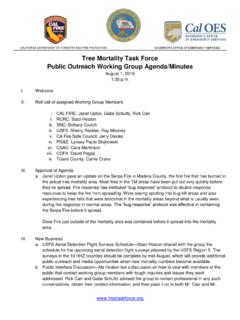
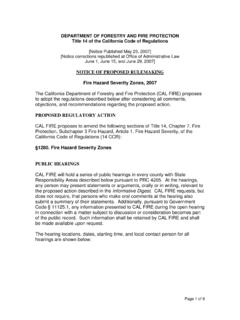
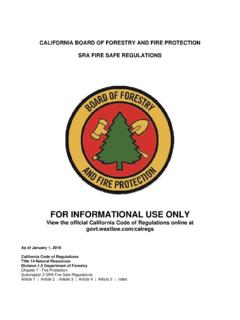
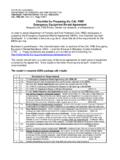
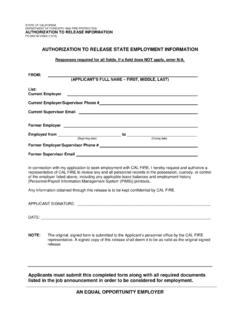
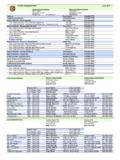



![CHAPTER 7A [SFM] MATERIALS AND CONSTRUCTION METHODS FOR ...](/cache/preview/4/b/b/0/4/f/9/9/thumb-4bb04f99e9c7f2d3944506316495658b.jpg)
